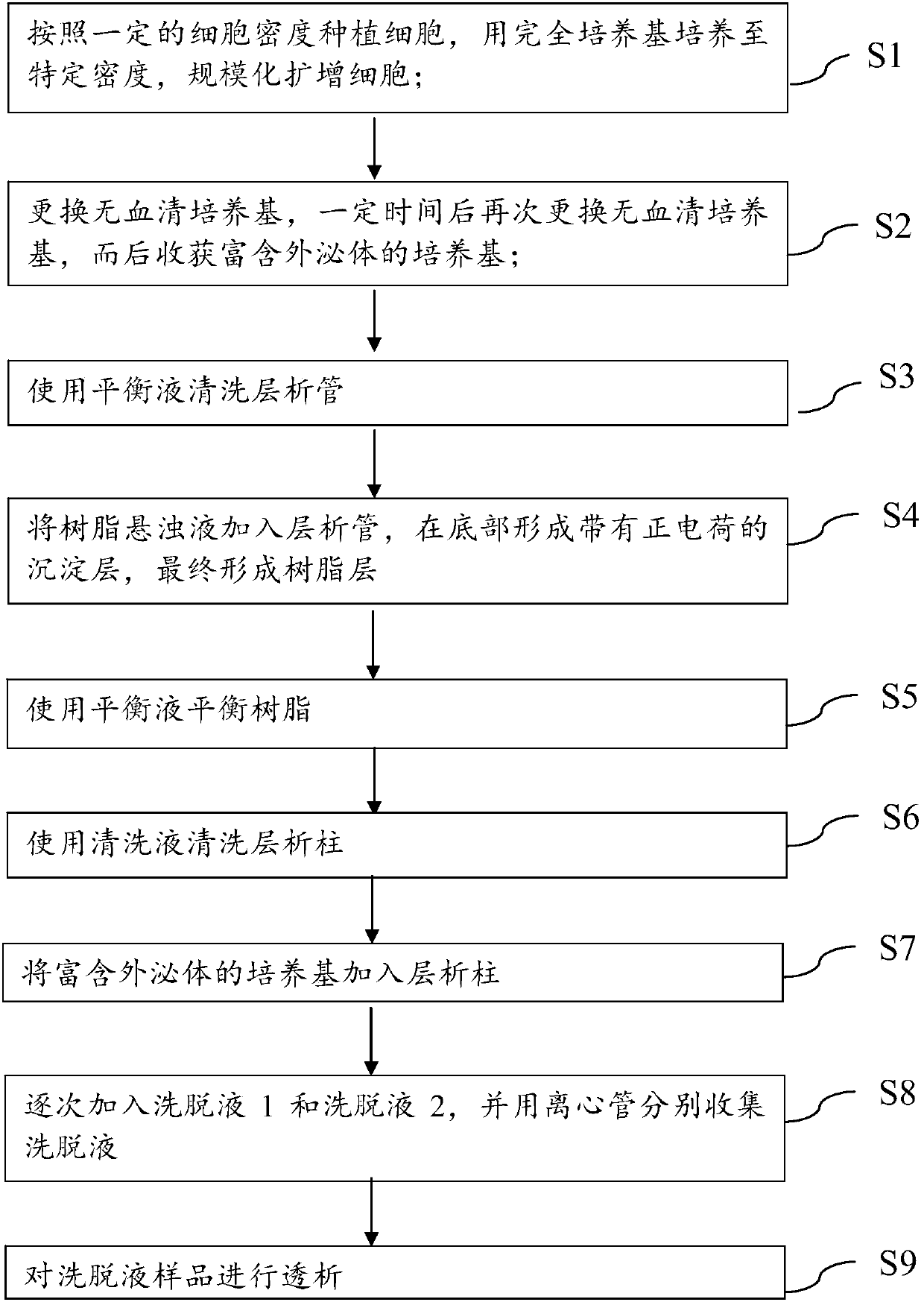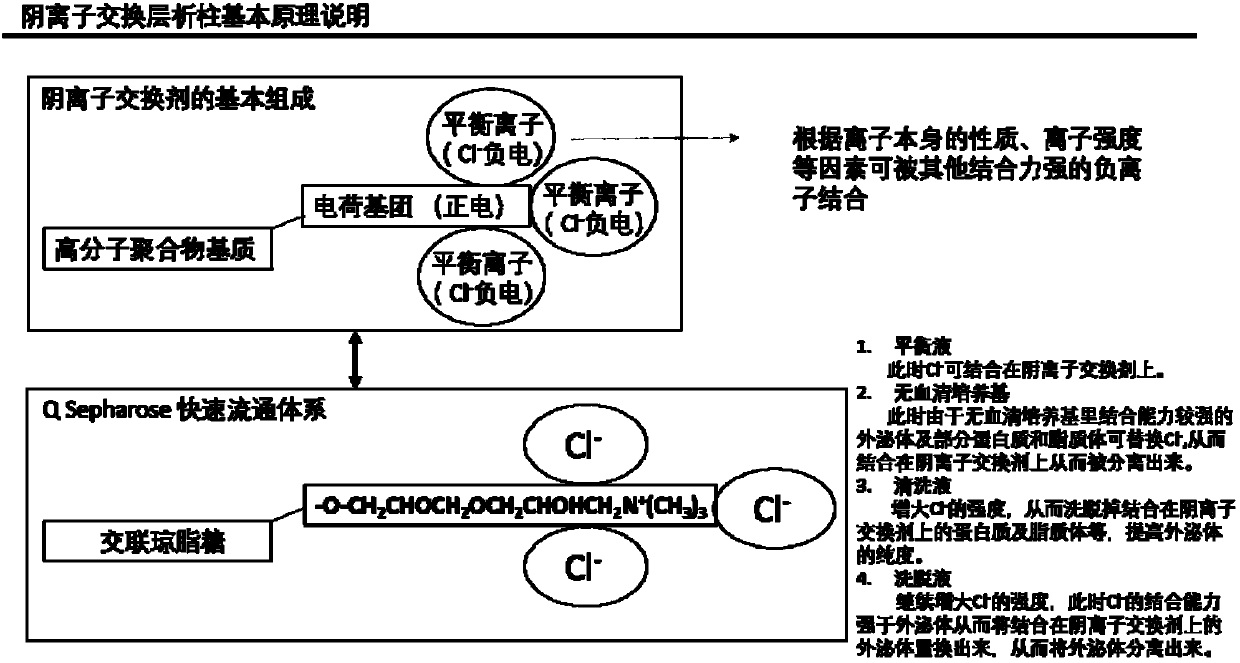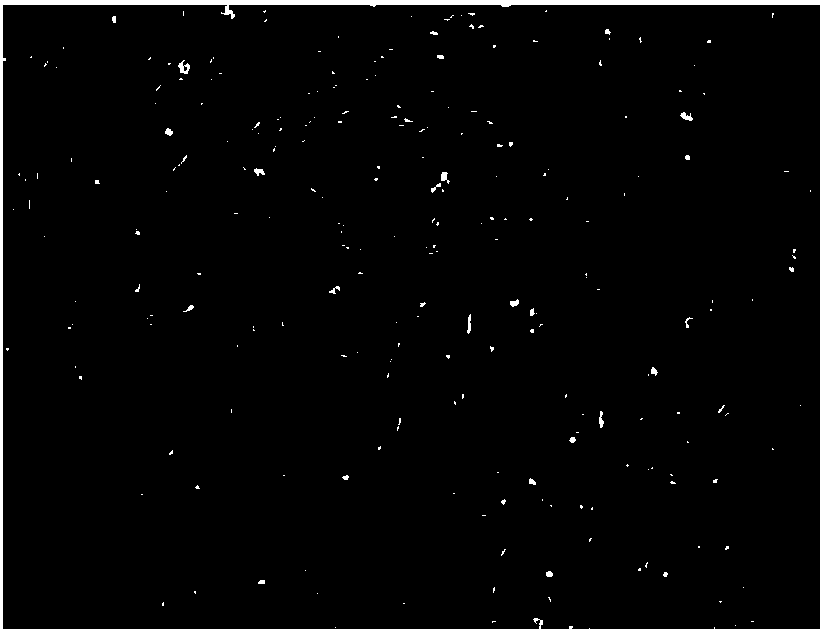Method for adsorbing and separating extracellular vesicles including exosomes secreted to medium by cells based on anion exchange resin
A technology of resin exchange and adsorption separation, which is applied in the direction of embryonic cells, germ cells, animal cells, etc., can solve the problems that the concentration of exosomes cannot reach a high level, the price of ultracentrifuge tubes is expensive, and the time of researchers is wasted, so as to save costs and time, reduce high cost, and reduce the effect of operation difficulty
- Summary
- Abstract
- Description
- Claims
- Application Information
AI Technical Summary
Problems solved by technology
Method used
Image
Examples
Embodiment 1
[0064] (1) A method for separating exosomes secreted from mesenchymal stem cells to the medium based on anion exchange resin adsorption
[0065] The method for separating extracellular vesicles secreted by mesenchymal stem cells into the medium based on anion exchange resin adsorption in this embodiment includes the following steps:
[0066] ①Use the complete medium of mesenchymal stem cells to cultivate mesenchymal stem cells from various sources in a massively expansive manner, with a planting density of 50-10000 / cm 2 , using the complete mesenchymal stem cell culture medium for 4-6 days, observe the cell growth density until 60-70%; the microscopic photos of the mesenchymal stem cells differentiated from urothelial-derived pluripotent induced stem cells are as follows image 3 shown;
[0067] ② When the cell density under the microscope reaches 60-70%, add 30-40mL / 175cm 2 serum-free medium. After 6 hours, harvest the first addition of serum-free medium and add a new 40...
Embodiment 2
[0092] (1) Macrophage function detection
[0093] 1.1 Experimental grouping (5 groups in total):
[0094] A. Normal control group: complete medium (DMEM+10%FBS, 300μL / well, the same below)
[0095] B. Positive control group: complete medium + 10ng / mL Ovalbumin (OVA)
[0096] C. Dexamethasone (DEX) treatment group: complete medium+10ng / mL OVA+1μM DEX
[0097] D. Exosome treatment group (5×10 8 / mL exosomes): complete medium+10ng / mL OVA+5×10 8 / mL exosomes
[0098] E. Exosome treatment group (2.5×10 9 / mL exosomes): complete medium+10ng / mL OVA+2.5×10 9 / mL exosomes
[0099] 1.2 Cell plate: resuscitate RAW 264.7 cells, divide the cells into 1×10 5 They were planted in 48-well culture plates, with 3 replicate wells in each group, and a total of 15 wells were planted. 300 μL of complete medium was added to each well, and placed in a cell culture incubator for overnight cultivation.
[0100] 1.3 Exosome anti-inflammatory function experiment: use 1.5mL EP tube to prepare 1mL...
PUM
| Property | Measurement | Unit |
|---|---|---|
| Diameter | aaaaa | aaaaa |
| Diameter | aaaaa | aaaaa |
Abstract
Description
Claims
Application Information
 Login to View More
Login to View More - R&D
- Intellectual Property
- Life Sciences
- Materials
- Tech Scout
- Unparalleled Data Quality
- Higher Quality Content
- 60% Fewer Hallucinations
Browse by: Latest US Patents, China's latest patents, Technical Efficacy Thesaurus, Application Domain, Technology Topic, Popular Technical Reports.
© 2025 PatSnap. All rights reserved.Legal|Privacy policy|Modern Slavery Act Transparency Statement|Sitemap|About US| Contact US: help@patsnap.com



